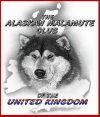Cushings Disease


You know how it is, you have an old boy or girl, motoring along into veteran status quite nicely, when all of a sudden one day you look at them and they look OLD, it seems to have hit them without you noticing. They look tired, have difficulty rising from their bed, lack energy, thinning coat, unkempt appearance, maybe a bit smelly. Perhaps drink a bit more or a lot more than usual, and have the occasional ‘accident’ in the house. Still love their food, maybe a little too much and are always hungry. Maybe have developed a few small general lumps and bumps under the skin and a bit of a pot belly nothing drastic enough to rush to the vet but just a slowing down which is not as gradual as you’d like and which you attribute to old age all the same.
Well maybe your dog has one of the common afflictions of the middle to old age dog , Cushing’s Disease
CUSHING’S DISEASE is due to excessive levels of cortisol hormone, a type of glucocorticoid or steroid, which in normal amounts has important roles in the body, for alertness, response to stress and helping to raise blood sugar levels. Cushing’s disease is a dysfunction of the complex system of interactions between the PITUITARY GLAND(about the size of a pea), located at the base of the brain, which sends hormones to stimulate the ADRENAL GLANDS near the kidneys which produce the cortisol
CAUSES
Pituitary Tumour( 80% cause ) Adrenal Tumour (20%)
Over medication of corticosteroids (Like Prednisone)
The excess of cortisol impacts most body systems, including the cardiovascular system, nervous system, immune system, kidney function, blood sugar levels, fat metabolism and skeletal muscles. Cortisol also plays an important role in contending with any type of stress such as infections, trauma, pain, surgery and fright. It is an essential hormone – but an over-production is devastating to the body.
We see it as they are getting old or for some reason their body is “out of balance”
Here are some of the many common indicators of Cushing’s not all will be present.
• Excessive water consumption
• Excessive or involuntary urination
• Voracious appetite • Potbellied appearance
• Hair loss
• Dry coat
• Fragile skin
• Hard lumps in the skin
• Loss of muscle tone
• Hindquarter weakness
• Exercise intolerance
• Lethargy
• Excessive panting
• Seeking cool places
• Prone to diabetes, pancreatitis or seizures
• Reduced immunity
TREATMENT
THERE IS NO PERFECT MEDICATION. THERE ARE PLUS AND MINUS POINTS FOR EACH CHOICE. YOUR VETERINARIAN WILL HELP YOU DECIDE IF TREATMENT IS NECESSARY & WHICH MEDICATION IS THE BEST OPTION. NOT ALL CASES OF CUSHING’S MUST BE TREATED.
Medication is given to destroy PART of the layer of the adrenal glands that produces cortisol with the goal of bringing cortisol production back to normal. The most common medication used is MITOTANE, though a few others are available, including VETORYL (trilostane).
Trilostane does not erode the adrenal cortex. It acts as an enzyme inhibitor and the inhibition it causes is fully reversible, but it can cause an idiopathic (unknown) reaction into life threatening Addisons disease, It is unclear why this reaction is still possible with this medication, in theory it should be safer.
Close monitoring of dogs undergoing treatment for Cushing’s is essential. The goal is to suppress cortisol production enough to keep pets healthy, but not so much that we create the opposite problem — Addison’s disease.
There are options when it comes to the treatment of Cushing’s disease. If a dog’s symptoms are not too serious, (e.g., he or she is panting more but is otherwise normal) treatment may not be warranted unless the problems worsen over time Non-invasive adrenal tumours are best dealt with surgically. If surgery is not an option, the aforementioned medications are of some benefit for the adrenal form of the disease.
A Holistic approach includes a healthy, natural diet, along with Traditional Chinese Medicine such as an herb called Si Miao San as well as the herb Ginkgo, which helps to lower cortisol secretion.
In general, the outlook for a pet with Cushings disease is good, there are several conventional and complementary treatment approaches available and most pets who have the disease are able to lead normal lives while receiving treatment.
The book “Dogs, Diet, and Disease” by Caroline Levin is a great guide for this information and is well worth a read for anyone with a dog with Cushing’s or other metabolism disease
